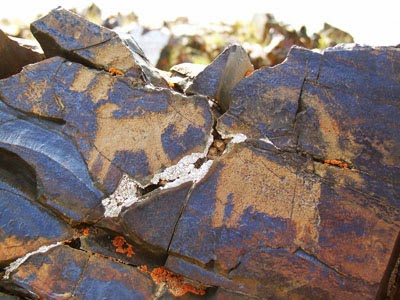 |
| Lilya Kas'yanova |
In this piece she describes petroglyphs found in the inner Tien Shan range as well as petroglyphs in the southern province of Osh.
Inner Tien Shan: Saimaluu Tash
In 1902, while investigating the postal road that connected Naryn and Andijan, the military topographer and artist Nikolai Hludov learnt from local people about the Saimaluu Tash mountain area. Saimaluu Tash ("Patterned Stone" in the Kyrgyz language) lies on the Ferghana range, in the area of the Kugart mountain pass.
 |
| Petroglyphs of the inner Tien Shan area, image: Lilya Kas'yanova |
It was not until 1950, in Soviet times, that the first solid expedition to Saimaluu Tash took place. After extensive research, the expedition chief, A. Bernshtam, concluded that a number of the area's rock carvings were destroyed during an earthquake that occurred at the beginning of the 1st millennium BC. There are, however, images carved on some rock fragments after that natural disaster.
The archaeologists divided the locality into two parts, which were named Saimaluu Tash One and Saimaluu Tash Two. They estimated there are 11,000 petroglyphs dating back to the Bronze Age. It is one of the world's most important rock art sites. This period is marked by a specific set of images, among which chariots and carts are frequent.
 |
| Chart of Saimaluu Tash symbols (UNESCO) |
The site can be reached in about a day on foot or horseback, but only around August. At other times, snow conditions make it too difficult to reach.
Osh Province Petroglyphs
That-i-Sulaiman ("Solomon's Mountain"), a limestone outcrop, is in the heart of Osh city. It dominates the Kyrgyz Fergana Valley and forms the backdrop to Osh, at the crossroads of important routes on the Central Asian Silk Roads. According to UNESCO, the That-i-Sulaiman mountain is "the most complete example of a sacred mountain anywhere in Central Asia, worshipped over several millennia". Sulamain was a beacon for travellers and revered as a sacred mountain. It is inscribed in UNESCO's World Heritage list.The mountain is riddled with numerous caves and grottoes where examples of ancient petroglyphs can be observed. These images of rock art display anthropomorphic creatures, the so-called labyrinths, solar symbols, square motives, and mysterious signs. More than four hundred petroglyphs were registered here. They date back to the Bronze Age and represent significant historical and archaeological value.
 |
| Aravan - celestial horses; image Google Maps |
In addition to common images of Central Asian petroglyphic art – ibexes, deer, human beings - here are picturesque illustrations of two pairs of horses. Archaeologists connect these exceptional depictions with the legendary, blood-sweating horses of Davan State (Ancient Fergana). These were the praised, swift racers that the Chinese called “heavenly” or “celestial” horses.
The petroglyphs play an important role in regional folklore and have become a pilgrimage site for Muslims in the Ferghana valley. There is also a Sufi shrine there.
The historical sites described in my two articles about Kyrgyz petroglyphs are considered to be among the most impressive petroglyphic complexes in Central Asia. The natural processes that have been taking place for centuries, as well as human interference, result in the decay of rock carvings and cave paintings. Nevertheless, there is still a unique possibility to feel a distinctive, historic charm and mystery at the sites.
 |
| Sun Boy felt cushion from Made & Told |
Contact Lilya on: lolya.87(at) mail (dot) ru
Read all Lilya's articles.
Related posts:
Kyrgyztsan's Petroglyphs #1 - Issyk-kul Hollow
Burana, Kyrgyzstan: Medieval Settlement & Central Asia's Oldest Minaret
100 Experiences of Kyrgyzstan
5 Reasons to Visit Kyrgyzstan